The content of the article
How to plant radish in open ground? The question seems to be from the most common. After all, it is easier to pour seeds into beds, periodically water, and then harvest. So do many. True, it is difficult to call a crop. What has grown is what they ate.
But I want something big, juicy radish. To be spicy, but without bitterness. And every now and then you hear from acquaintances that you are not deformed, went dry in the arrow. Sometimes an incomprehensible root grows on its site instead of a beautiful root crop. And what to do?
It turns out that a whole treatise can be written on the cultivation of radishes. This unpretentious culture has some features. They must be taken into account. Understand?
Landing time
You can plant radish in the open ground all year round. Yes, and in the winter too. True, it rises only when the temperature rises to + 7 ° C. But first things first. Consider each season.
Spring. As soon as a couple of centimeters of snow remains on the bed, sprinkle it with ash or cover it with a black film (cloth, material). This will allow the soil to warm up enough. And you can plant. In the middle lane around mid-March.
When snow melts right into the damp earth, a radish is sown in early April. Next, new landings are done every 12 days. Such a conveyor will allow you to eat root crops constantly.
May is the most suitable month for sowing radishes. The day is still too short, and the temperature allows you to do without additional shelters.
Summer. The planting season continues with the conveyor method. The only rule is that from 19.00 to 7.00 the bed will have to be covered to completely block access to sunlight. It can be a dense fabric on arcs, a cardboard box, a black film. In short, everything that is at hand. So do all of June and the first half of July. In August, this procedure is not necessary because daylight hours are shortened.
Autumn. Late-ripening varieties are planted until mid-September. October is an exception. It is too warm for planting, and the radish will not ripen before the onset of frost. But at this time, you can prepare the beds and put in bags or buckets of earth to fill the winter beds. But November is the time for winter landing.
It is advisable to wait until the ground freezes at least to a depth of 5 cm. Otherwise, the seeds will sprout, they will kill them with frost.
Winter. Remember the beds prepared in October? Throughout the cold season, you can remove snow from them. Then you need to sow the radish, cover it with prepared soil with a layer of no more than 5 cm. Throw snow back from above and wait for spring warming.
Such plantings sprout 3 weeks earlier than spring ones. This is undoubtedly a plus. After all, fresh vitamins are always appreciated when greens still appear in the garden.
The soil
Over time, the landing figured out. Now let's talk about the earth. Radish loves ... no, not any. To obtain large and even root crops, the earth must be loose, well fertilized. By the way, you cannot categorize manure under the radish! Root crops will be very large, dry and hollow.
Better to add potassium. Ash for example. You can any potassium-containing mineral fertilizer. Just look at the packaging so that there is no overabundance of nitrogen. Otherwise, the radish will be clumsy and bitter.
Fertilizing during the growing season is not needed if the land is well prepared. Naturally, crop rotation must be observed. A radish cannot be planted after cruciferous, they have the same diseases and pests. For the same reason, white mustard is not sown under it like green manure.
Dig the soil, harrow a rake. Then they plot the beds at a distance of 10 cm from each other. Depth 5-5.5 cm.The bottom of the grooves can be dusted with ash or clean sand. Just the seeds of the radish are dark, and so they will be clearly visible.
Instead of plotting beds with improvised tools, it is better to make yourself a special marker. It is a plate on which pegs are packed according to the scheme 5 by 5 cm. These can be specially prepared twigs, teeth from a rake for tedding hay, sticks from an old crib.
Such a board is pressed to the surface of a prepared garden bed and is stepped on it with the foot. Then they carefully pull it out, holes are obtained. It is very convenient to lay out the seeds in them. And then you do not have to pull out the seedlings.
Tip. Such a board will always come in handy on the farm. Especially if you make the pegs removable or cook several different ones for planting carrots, beets, radishes. For diving seedlings in a greenhouse - generally an irreplaceable thing.
How to plant a radish
Most gardeners are used to doing what? They drew a furrow, watered it. Then they pour seeds ... like a sower of bonds in a famous work - in handfuls, but thicker! Perhaps we’ll tear it apart later.
We consider such a method to be an inappropriate consumption of seed material. A quality is now very expensive. Even old radish seeds sprout almost 99%. So why bother? When pulled apart, there is a high risk of damage to the roots of other plants. Or you’ll be late for a few days, and they will immediately begin to stretch.
Some generally plant radish seedlings. Why all these dances with picks and transplants that damage the root system? From seedlings to technical ripeness in super-ripening varieties, only 20 days pass. What is there to plant? And when do root vegetables gain juiciness and mass, if you pick them out of the earth now and then and shove them back? Do not need this anything, still not eggplant.
The correct procedure for a classic landing in mid-April (middle lane):
- We plotted grooves in the prepared soil, about 6-6.5 cm deep.
- Well watered with clean water.
- They dusted the bottom with ash.
- Spread the radish seeds at a distance of 5 cm.
- They sprinkled with a layer of loose dry soil 3-3.5 cm.
- Pressed lightly with a palm.
Why dry? Because sprinkling with moist creates a thick crust on the surface. You can’t loosen, suddenly there are already shoots close. And the peel itself is an almost insurmountable barrier for young shoots.
If everything is done correctly, then seedlings will appear within 5-6 days. Some sources recommend germinating seeds before sowing. Could be so. But in principle, there is enough moisture in the soil for normal swelling and germination.
If started with germination, then first soak the seeds for 3 hours in a warm solution of any growth biostimulator. Not at hand? It doesn’t matter, they use plain water. Next, the seeds are laid out on a damp cotton cloth or paper towel. In a day they will begin to sprout, now you can plant. Just do not tighten, otherwise the roots are intertwined and there is a risk of breaking them.
By the way, to do row-spacings is enough no more than 10-11 cm. Someone will say, but how to grapple? No way. During the growing season of radishes, the grass does not have time to grow. And what comes up is easy to pull out with your hands.
If you are too lazy to bother with laying out the seeds in the beds, then make yourself a ribbon. They are simply laid out on the bottom of wet beds and sprinkled with earth. Unlike the classical method - first wet and only then dry from above.
Where to get the tapes? Buy or do it yourself. To do this, take a thin toilet paper. Using a paste and a toothpick, glue the seeds in rows at the right distance. Dried, cut into strips and stored until sowing.
Some people are not comfortable laying long ribbons. Or short rows are drawn. And what prevents scissors from cutting them into short pieces? Or instead of paper, take kitchen napkins. When soaking, they easily creep and do not block the path of sprouts. Plus they are short.
Watering Rules
Radishes begin to be watered only after emergence. Otherwise, a film forms on the surface that interferes with the shoots. Further, there are no strict recommendations for irrigation. There is no specific schedule.
Every day they moisten the ground until they are well moistened. In rainy weather, you can skip watering. In the heat - you can’t. Radish likes to drink a lot. Want to get a wonderful crop? Do not spare the fluid.
Features of autumn planting
There is a misconception that in autumn only late-ripening radish varieties are planted in the ground. And who established such a rule? Today we will break the bans. And calmly plant ultra-mature varieties. We take care of them in the same way as in the spring planting.
Try it, you will be pleasantly surprised. And you will look forward to next fall to repeat the experiment. After all, often, root crops turn out to be much better and tastier than summer ones. This is due to the shortening of daylight hours and the absence of high temperatures. Indeed, root crops are best obtained at + 19-21 ° C.
The thermometer shows below - the plant is suspended in development. You can put arcs and cover with a film or non-woven material. Root crops will have time to ripen. The only thing is, they are not stored in the cellar for as long as the late-ripening varieties calmly lie. And with proper storage, you can enjoy your radish even in January!
Some useful tips
- Instead of soaking, place the seeds in a tissue bag or simply wrap in gauze. Then they are added dropwise at a depth of about 19-21 cm. After 5 days they get it out and plant it. They say this method allows the seeds to be saturated with moisture and the vital energy of the earth. We do not know about energy, but as a preliminary germination method is quite acceptable. True, a little dirty. But there are no real gardeners with clean hands and chic manicure.
- In spring and winter, you can plant a radish in the tree trunk circles. They still do not have time to completely dissolve the foliage, and the crop is already ripe. So shading will not happen.
- To collect all root crops at the same time, you will have to calibrate the seeds. If the cleaning time is not critical, for example, not for sale, but only for yourself, then you can plant everything. Because large ones germinate faster, respectively, and the root crop ripens earlier. For calibration use a colander or a sieve with large cells. You can ask children with grandchildren to sort out, let them get used to work.
- There are recommendations to sprinkle beds after sowing with peat. We strongly do not recommend this. Peat is a mulching material. It retains moisture well from the inside. But it also delays the penetration of sunlight outside well. Put a layer a little more - and you will wait for seedlings for a very long time. Cover with too thin a layer - all the moisture will evaporate very quickly, its seeds simply will not be enough.
- With an early spring planting, simultaneously with shelter with dark materials, it is desirable to process the bed with em preparations. Only not later than 5 days before sowing. Microorganisms will help the earth wake up and begin to work fruitfully for your good.
How to plant radish in open ground? It turns out using special technology. We have described a lot of methods. It is only necessary to choose the most suitable for you personally. Then there will be no hassle and the harvest will be excellent.
Video: early planting radish in the open ground




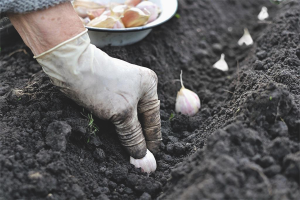
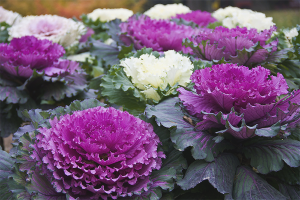

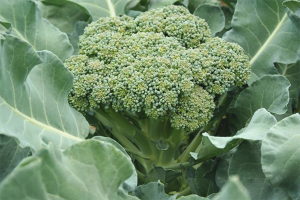
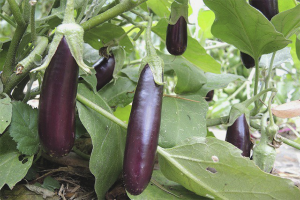

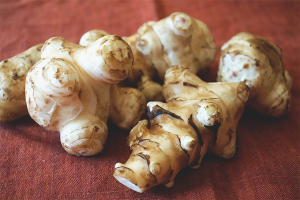
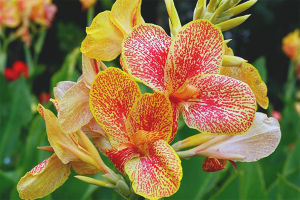
Submit